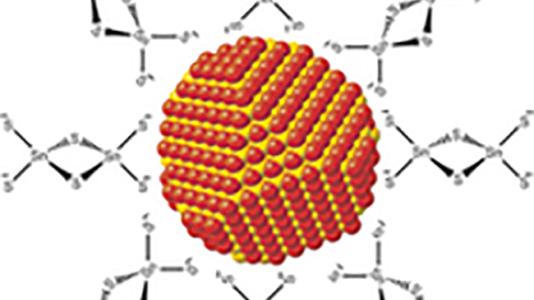
The inorganic nanocrystal arrays, created by spraying a new type of colloidal “ink”, have excellent electron mobility and could be a step towards addressing fundamental problems with current solar technology.
“With today’s solar technology, if you want to get significant amounts of electricity, you’d have to build huge installations over many square miles,” said team leader Dmitri Talapin, who holds a joint appointment with Argonne and the university. But because current solar cells are based on silicon, which is costly and environmentally unfriendly to manufacture, they aren’t cost-effective over large areas. The challenge for scientists is to find a way to manufacture large numbers of solar cells that are both efficient and cheap.
One possibility to make solar cells more economically would be to “print” them, similar to how newspapers are printed. “You’d use a kind of ‘ink,’ stamped on using a roll technology with a flexible substrate,” Talapin said.
Solar cells have several layers of different materials stacked on top of each other. The team focused on the most important layer, which captures sunlight and converts it into electricity. This layer, made of a semiconducting material, must be able to transform light into negative and positive electrical charges but also easily release them to move further along the material to generate electrical current.
Many methods to grow the semiconductors need high temperatures, but a cheaper approach would be to make them in solution. This, however, requires a precursor that is soluble.
The team developed that precursor using quantum dots. Small grains of semiconductors, suspended in a liquid, are “glued” together with new molecules called “molecular metal chalcogenide complexes.” The process heats the material to about 200 degrees Celsius, much lower than the temperatures required for manufacturing silicon solar cells. The result is a layer of material with good semiconducting properties.
“The electron mobility for this material is an order of magnitude higher than previously reported for any solution-based method,” Talapin said.
The team used intense X-rays from the DOE Office of Science’s Advanced Photon Source at Argonne to watch as the semiconductor film was created.
“We believe that we could make very competitive solar cells with these nanoparticles,” Talapin said.
Talapin said the success played on the complementary partnership between the University of Chicago and Argonne’s Center for Nanoscale Materials. “At the university we have great students and postdocs who can do a lot of the theoretical chemistry, which requires a lot of manpower,” Talapin said, “but Argonne is a fantastic place to do research that requires sophisticated instrumentation and infrastructure.”
The paper, “Band-like transport, high electron mobility and high photoconductivity in all-inorganic nanocrystal arrays”, was published in Nature Nanotechnology.
The research was supported by the Office of Naval Research and a National Science Foundation CAREER award. Work at the Center for Nanoscale Materials and the Advanced Photon Source was supported by the DOE’s Office of Science.
The Center for Nanoscale Materials at Argonne National Laboratory is one of the five DOE Nanoscale Science Research Centers (NSRCs), premier national user facilities for interdisciplinary research at the nanoscale, supported by the DOE Office of Science. Together the NSRCs comprise a suite of complementary facilities that provide researchers with state-of-the-art capabilities to fabricate, process, characterize and model nanoscale materials, and constitute the largest infrastructure investment of the National Nanotechnology Initiative. The NSRCs are located at DOE’s Argonne, Brookhaven, Lawrence Berkeley, Oak Ridge and Sandia and Los Alamos National Laboratories. For more information about the DOE NSRCs, please visit https://science.energy.gov/bes/suf/user-facilities/nanoscale-science-re….
